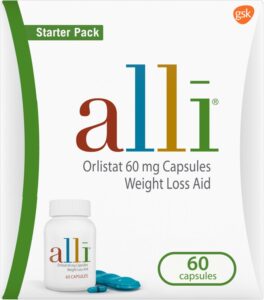Display Campaign Optimization
The goal of both search campaigns and display campaigns is to generate leads and sales, but display campaign management is a bit different from search campaign management in terms of click-through rate. You need to consider the following factors when optimizing your display advertising.
1. Campaigns Organization by Theme

Structure your campaigns to make them easier to optimize and manage. Organize your campaigns under ad groups that match your chosen targeting methods or are related to the same theme. You can see your display campaign performance at the keyword level as similar to what you have done in search campaigns. All keywords are treated as the broad match in display campaign.So check the performance of your ad group and keywords when searching for your targeting keywords. Group your keywords into ad groups based on your products and services which will help you reach people interested in your business.
2. Write Compelling Ads
It’s necessary to create compelling ads to reach and connect better with your audience. Storytelling is essential no matter whether it’s an image ad or a text ad. Keep your ads eye-catching to attract more audiences. You can use Ad Gallery to create custom ads based on your website’s look. You must create ads in all formats to reach the most audiences as some websites don’t support all types of ads. Look below for the points that you should keep in mind while creating a display campaign:
- Look for the type of person who is browsing the website placements that you targeted.
- Look for the particular actions that you want that person to take.
- Check if you have any special features and offers for that person on your website.
- Showing that person a page which can make him do some actions on it.
- Testing multiple variants of your ad to optimize and get the best one.
Look for the below example by Marketo which shows two lead generation campaigns. Marketo offers a free ebook in exchange for people’s email. They used “Download” instead of popular “Sign Up” and “Learn More” which has increased the engagement, reach, and likes.

3. Targeting Your Ads Effectively

You need to choose how you are going to reach people on the web. The basic ways are refining your selected keywords, using placements an topics, remarketing people who have visited your website multiple times, excluding irrelevant websites, etc.
Choosing Right Keywords
Individual keywords of your ad groups determine where your ad will show on the display network. Keep count of around 20 keywords for each ad group, and your keywords should be related to the theme and type of your the ad group. The more related your keywords are, the more it will help you reach the right and potential audience.
Excluding Irrelevant Keywords
Avoid paying for any unnecessary clicks and exclude the irrelevant keywords to avoid showing your ads on pages with irrelevant topics. For example, you sell ‘wooden doors’ not ‘glass doors,’ so you should choose ‘wooden’ and ‘doors’ as your keywords excluding ‘glass’ keyword to prevent your ad from showing on display network pages that focus on glass doors selling and thus will reduce unwanted traffic.
Selecting Placements and Topics
Try to include multiple placements like the combination of highly popular websites to increase your chances to show your ad. If you are choosing one or limited placements then you are lowering the chances for your ad to appear and reach.
Excluding Irrelevant Websites and Topics
Exclude irrelevant websites and topics to keep your ads showing to related websites, not to the websites that are not related to your business. Reaching People Who Have Already Shown Interest in Your Business: You should target people who have already visited your website multiple times or have used your app by creating a remarketing campaign.
4. Adjusting Your Bids
Monitor and manage your bids to get the most out of your daily campaign budget. When targeting your display campaign, use your ad group default bid, set bid adjustments for your targeted methods, and set individual bids for your targeted methods. For example, your ads on your products “wooden doors” are performing great on certain websites that you targeted on the display network. Then you should increase your bids for those specific placements and show your ads more often on those websites.
5. Focusing on Cost Per Acquisition (CPA)

Use your CPA, cost-per-acquisition and conversion tracking data to check your performance for all your placements on Display Network. DO not focus on CTR here as it generally lower on display network than search network and people on display network pages have different goals. People generally browse information rather than searching with keywords on display network. Keep the below points in focus when you are advertising on display network:
- Low CTR doesn’t mean that your ads are not performing well.
- Your display ad performance on display network does not affect the Quality score, cost-per-clicks CPCs, or ad position on Google search pages or other pages on the search network.
6. Keep Checking Your Ad’s Performance
Find the Sites Where Your Ad Appeared
Keep an eye on the websites, apps and videos where your ad appeared. This monitoring will help you avoid impressions on placements where your ads don’t earn clicks. You can exclude a placement that never leads to any of the clicks on your ads, and if your ad is performing well on placement and is leading to a lot of clicks, then you might target them and set higher bids for them.
Keep Using Google Conversion Tracking
Keep tracking the conversions generated from your ads to decide whether you should increase your budget, change your bid adjustments, or make any other changes to your ad group for the purpose of attracting more visitors.
Maintain High-Quality Ad Campaign
Maintain a high-quality display ad campaign as many websites in display network only display few ads per page. Try improving the quality score of your ads as your ad’s placement is depended on ad’s quality score and bid.
https://www.youtube.com/embed/lNMzBuTsPLs?enablejsapi=1The above video by AdWords explains optimization steps for better display campaign performance. It covers three major areas:
- Audit your site categories for unwanted and irrelevant content. Site category options that most of the brands want to exclude are error pages, profanity and rough language, video-sharing pages, Military and international conflict, etc. You can add the exclusions through the display network tab of the AdWords User Interface.
- Optimize your placements with the placement performance report to identify underperforming and irrelevant placements.
- Surface any relevant technical issues with your account set-up dashboard in the summary tab of the AdWords User Interface. Common pitfalls can be low bids, budget limits, inactive targeting, and inactive tags. Check your dashboard for the above pitfalls.




